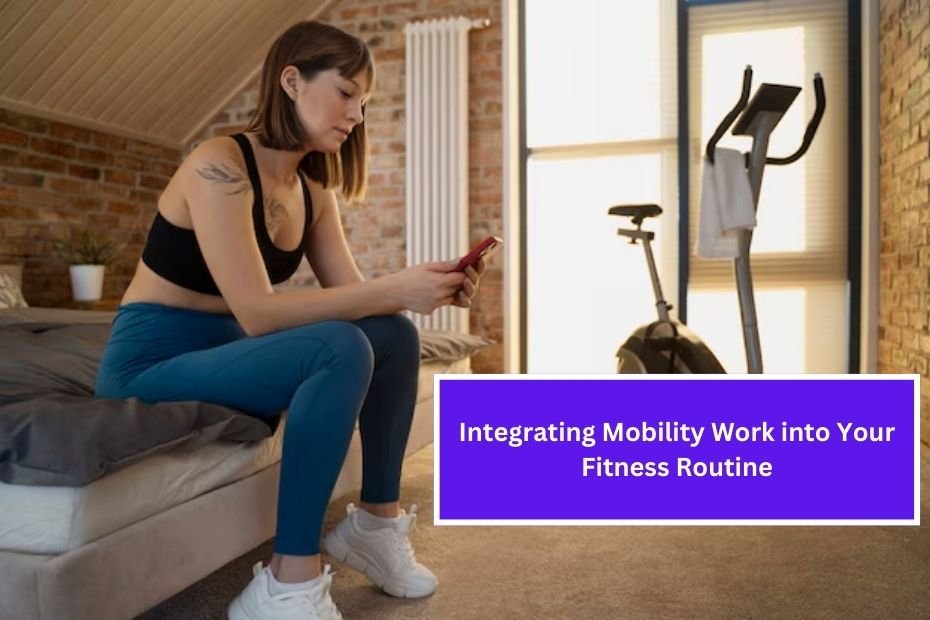In recent years, the importance of mobility work has gained recognition in the fitness community. While strength training and cardiovascular exercises often take center stage, mobility training is equally essential for overall health and performance. This article delves into the significance of mobility work, its benefits, practical exercises to incorporate into your routine, and tips for ensuring a well-rounded fitness regimen.
Introduction
Mobility work involves exercises that enhance the range of motion in your joints and improve the functionality of your muscles. Unlike flexibility, which often focuses on stretching specific muscles, mobility emphasizes the ability to control your movements and maintain joint health. Integrating mobility work into your fitness routine can prevent injuries, enhance athletic performance, and improve your overall quality of life.
Understanding Mobility
- Definition of Mobility
Mobility refers to the ability to move freely and easily, with a focus on the joints’ range of motion and the control over movements. It encompasses various factors, including joint flexibility, stability, coordination, and balance. - Difference Between Mobility and Flexibility
While flexibility is the ability of a muscle or group of muscles to lengthen and allow for a range of motion at a joint, mobility includes the control of that range. Mobility incorporates strength and stability into movement patterns, making it crucial for functional fitness. - The Role of Joint Health
Healthy joints are essential for mobility. Joints can become stiff or painful due to inactivity, injury, or age. Mobility work helps to maintain joint health by promoting synovial fluid production, which lubricates the joints, and by improving blood circulation.
Benefits of Mobility Work
- Injury Prevention
One of the primary benefits of incorporating mobility work is the reduction of injury risk. By improving the range of motion and strengthening the muscles around the joints, you can help prevent strains, sprains, and other injuries. - Enhanced Athletic Performance
Mobility work can lead to improved athletic performance. Better mobility allows for more efficient movement patterns, increasing your strength, speed, and agility during physical activities. - Improved Posture
Many individuals suffer from poor posture due to sedentary lifestyles and muscle imbalances. Mobility exercises can help correct these issues by promoting better alignment and reducing tension in the muscles. - Increased Functional Movement
Daily activities, such as bending, reaching, or squatting, require mobility. Integrating mobility work into your routine can enhance your ability to perform these movements, improving your overall quality of life. - Enhanced Recovery
Mobility work can aid in recovery after workouts. Gentle movements and stretching can help alleviate soreness, reduce muscle tightness, and promote relaxation, allowing for a quicker recovery process.
Integrating Mobility Work into Your Fitness Routine
- Warm-Up Routine
Start your workouts with a mobility-focused warm-up. This can include dynamic stretches and movements that target the areas you’ll be working on during your main workout. A proper warm-up prepares your body for exercise and reduces the risk of injury. - Dedicated Mobility Sessions
Consider dedicating specific sessions to mobility work. These sessions can be standalone workouts that focus solely on improving your joint health and range of motion. Aim for 20-30 minutes of targeted mobility exercises 2-3 times per week. - Incorporate Mobility Drills into Strength Training
Integrate mobility exercises into your strength training routine. For instance, perform a few mobility drills between sets or as part of your cooldown. This approach keeps your body agile while building strength. - Active Recovery Days
On days when you’re not doing intense workouts, focus on mobility and flexibility exercises. Activities like yoga or Pilates can enhance mobility while providing a low-impact workout. - Cool Down with Mobility Work
After your workouts, cool down with mobility exercises to help restore range of motion and promote recovery. Stretching and mobility drills can relax your muscles and improve your flexibility.
Practical Mobility Exercises
Here are several effective mobility exercises you can incorporate into your fitness routine:
- Hip Circles
- Stand with your feet shoulder-width apart.
- Lift one knee and rotate it outward in a circular motion.
- Perform 10 circles in each direction on both legs.
- Thoracic Spine Rotations
- Kneel on all fours with your hands beneath your shoulders and knees under your hips.
- Place one hand behind your head and rotate your torso, bringing your elbow toward the opposite knee.
- Perform 10-15 repetitions on each side.
- Ankle Dorsiflexion Stretch
- Stand facing a wall, placing your hands on it for support.
- Step one foot back and bend the front knee while keeping the heel down.
- Hold for 15-30 seconds on each side.
- Dynamic Lunges with a Twist
- Step forward into a lunge position with your right foot.
- As you lunge, twist your torso to the right, extending your arms.
- Alternate sides for 10-15 repetitions.
- Cat-Cow Stretch
- Begin on all fours.
- Inhale as you arch your back and look up (cow), then exhale as you round your back and tuck your chin (cat).
- Perform 10-15 cycles to promote spinal mobility.
- Shoulder Dislocates
- Hold a resistance band or towel with both hands in front of you.
- Keeping your arms straight, raise the band over your head and behind your back, then return to the starting position.
- Repeat for 10-15 repetitions.
- Pigeon Pose
- From a plank position, bring one knee forward and place it behind your wrist.
- Extend the opposite leg back and lower your torso toward the ground.
- Hold for 30 seconds on each side to open up the hips.
Tips for Effective Mobility Training
- Listen to Your Body
Pay attention to how your body feels during mobility exercises. If you experience pain or discomfort, modify the movement or consult a professional. - Consistency is Key
Like any fitness component, consistency is crucial for seeing progress. Incorporate mobility work regularly into your routine for the best results. - Focus on Quality Over Quantity
Prioritize the quality of your movements rather than the number of repetitions. Controlled movements will yield better results and help prevent injuries. - Breathe Deeply
Incorporate deep, controlled breathing into your mobility work. This can help you relax and improve your range of motion. - Involve a Trainer or Coach
If you’re unsure how to start or which exercises to focus on, consider working with a fitness professional. They can provide guidance tailored to your specific needs and goals.
Conclusion
Integrating mobility work into your fitness routine is essential for enhancing performance, preventing injuries, and improving overall quality of life. Mobility training goes beyond mere flexibility; it encompasses strength, stability, and control, which are vital for functional movement.
As you incorporate mobility exercises into your regimen, remember to prioritize consistency, quality, and listening to your body. The benefits of improved mobility extend beyond the gym, positively impacting daily activities and overall well-being.
In today’s fast-paced world, it’s easy to overlook mobility work in favor of more traditional workouts. However, recognizing its significance can lead to better physical performance, reduced injury risk, and a healthier, more active lifestyle. By dedicating time to mobility training, you are investing in your body’s longevity and functional capabilities, ensuring that you can move with ease and confidence for years to come.

